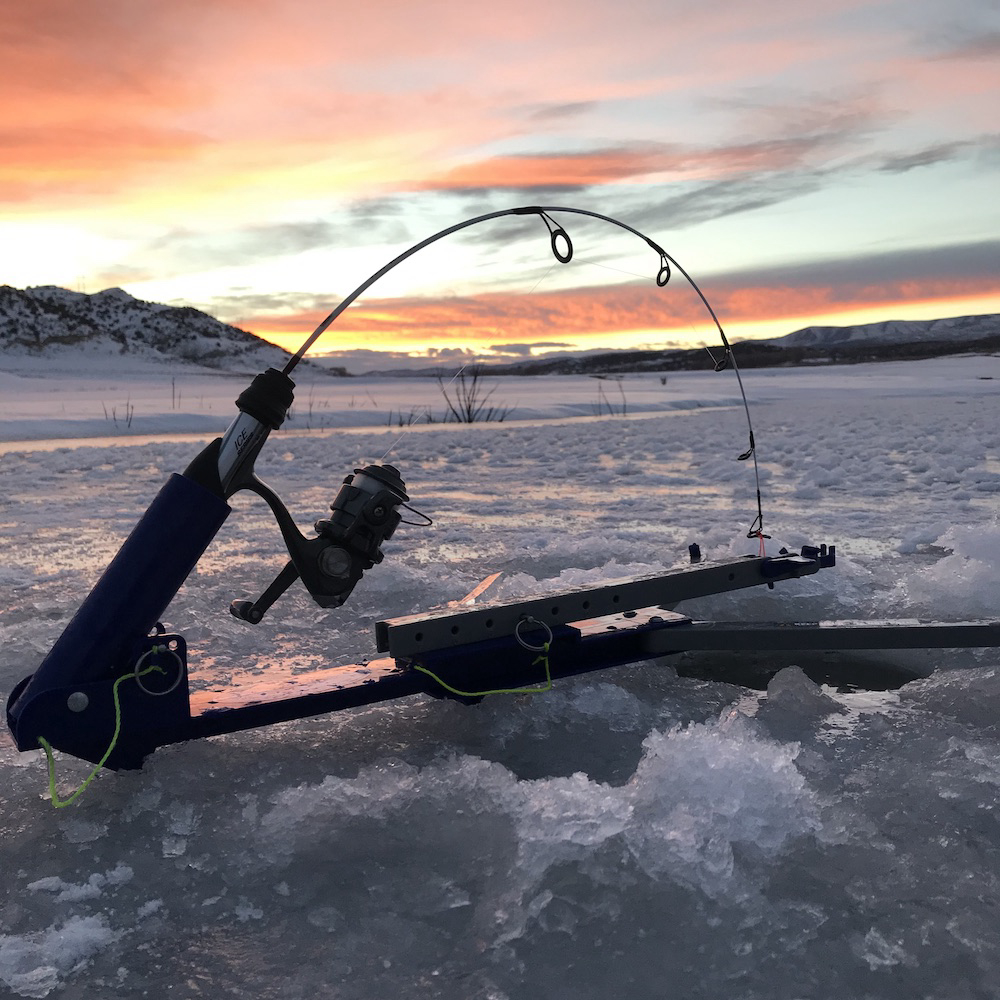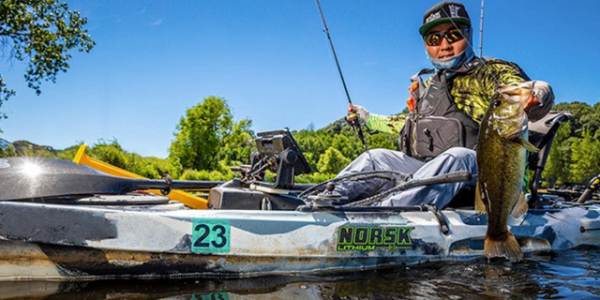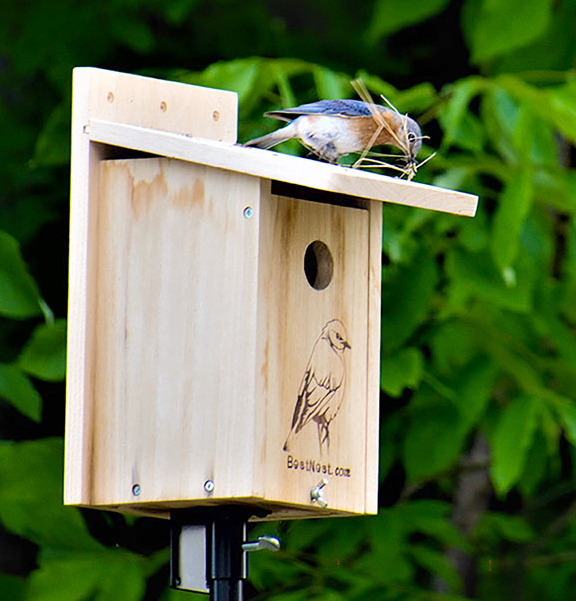Get hooked on fun, camaraderie of ice fishing
Fishing is a year-round activity and when the thermometer plunges below freezing in Michigan, most anglers have little choice but to hit the hard water. Ice fishing becomes the go-to activity until spring.
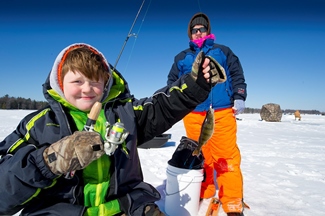 For beginning anglers, ice fishing offers one significant advantage: access. Boat-less anglers, who otherwise are limited to shorelines or fishing piers much of the year, can often access entire lakes. That inspires some anglers to proclaim that ice-fishing season is their favorite time of year.
For beginning anglers, ice fishing offers one significant advantage: access. Boat-less anglers, who otherwise are limited to shorelines or fishing piers much of the year, can often access entire lakes. That inspires some anglers to proclaim that ice-fishing season is their favorite time of year.
Fortunately, ice fishing can be relatively simple. All that’s needed to start is a way to make a hole in the ice (an auger or spud), a way to clear the slush from it (an inexpensive scoop), and rudimentary equipment.
So how do you get started?
There’s a good opportunity coming soon. Feb.14-15 is Michigan’s annual Winter Free Fishing Weekend, when no license is needed to participate. There are hands-on educational events scheduled at a number of areas. In addition, the Carl T. Johnson Hunting and Fishing Center in Cadillac holds on-the-ice fishing events every Saturday at noon.
Novice anglers often can find assistance nearby. Tom Goniea, a fisheries biologist at the Department of Natural Resources, says finding a mentor helps shorten the learning curve.
“Ask around,” Goniea said. “Ask the guys at work or the folks at church. Ice fishermen make up a community that’s usually quite willing to introduce others to the sport.
“And most ice fishermen have enough equipment that they can get you started if you go with them so you can see what you need.”
DNR fisheries biologist Christian LeSage agrees.
“There‘s a big social component to ice fishing,” he said. “When you get out on the ice people are usually friendly – they’re willing to tell you what they’re doing, what they’re using, and how they’re catching fish.”
Except for largemouth and smallmouth bass – bass season closes Jan. 1 and doesn’t completely reopen until the Saturday before Memorial Day – anglers who ice fish can pursue all species they target the rest of the year. Ice fishing can range from fishing for panfish on a farm pond to making miles-long sojourns on the Great Lakes in pursuit of walleyes, lake trout or other top-of-the-food-chain predators.
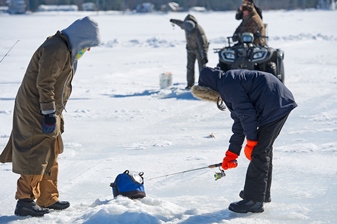 LeSage recommends people start with panfish. He likes bluegills.
LeSage recommends people start with panfish. He likes bluegills.
“You can try it on a small pond in a park,” he said. “And you don’t need extravagant gear. If you go places where people have been fishing, you don’t even need an auger – you can reopen a hole with a hammer.
“Most veteran fishermen know that the best fishing is at dawn and dusk, but you can catch bluegills throughout the day. You can catch them in shallow water. You can catch a lot in a small area. And they’re delicious.”
What’s nicest about bluegills is that they can be found almost everywhere and, as fishing quarry, are relatively unsophisticated. All you need is a basic gear. Small fiberglass rods with simple, spring-tension spoons can be yours for less than $10 and you will see accomplished ice anglers using them. Add some light line, a few low-cost tear drops (small weighted hooks) and a container of insect larvae (wax worms or spikes, the early life stages of bee moths or flies, respectively) and you’re in business. Lower your bait to the bottom, begin slowly working it upward in the water column until you start getting bites, and then fish at that depth.
It can (and does) get much more complicated with expensive rods, sonar fish finders, and a plethora of other equipment. But many anglers never acquire all that gear and continue to enjoy productive bluegill fishing.
As you progress in the sport and explore other ice-fishing opportunities, the equation becomes decidedly more complex. Get addicted to walleye fishing and you’ll be into snowmobile or quad runners, insulated ice shanties, GPS, underwater cameras – the list is endless.
But some factors never change: The first rule of ice fishing is to be safe.
Good, strong ice can support a semi-truck, but every year there are tragedies that often involve recklessness. Make sure the ice is safe. Even arctic temperatures won’t guarantee it, especially if there’s an insulating layer of snow on top. You can get up-to-date info from bait shops around fishing locales, but always make sure yourself. Carry a spud to test the ice in front of you as you venture forth. Don’t approach ice that is discolored or has objects (such as vegetation or timber) protruding through it. Be especially careful of rivers (current can degrade ice quickly) or spring-fed lakes and ponds where warmer water can cause thin spots in an otherwise solid surface.
Always carry basic emergency gear, just in case. Ice picks (or homemade alternatives constructed of nails in dowels) will give you a way to get purchase on the ice should you break through. Carry a rope to toss to someone else who breaks through.
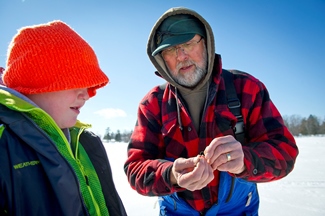 It’s better – some would say mandatory – not to go alone. You certainly don’t want to head miles off shore – at Saginaw Bay, say, or Little Bay de Noc – without a partner. Always make sure someone knows where you are going and when you plan to return. Carry your cell phone.
It’s better – some would say mandatory – not to go alone. You certainly don’t want to head miles off shore – at Saginaw Bay, say, or Little Bay de Noc – without a partner. Always make sure someone knows where you are going and when you plan to return. Carry your cell phone.
Make sure you dress for the weather. Dress in layers from head to toe – the best way to keep your feet warm is to keep your head warm – and a waterproof outer layer is advisable. Small luxuries – such as extra gloves and hand warmers – often pay large dividends.
Ice fishing isn’t for everybody. But if you look around in the winter and see the huge shanty towns that spring up on some of Michigan’s best fishing lakes, it’s obvious that a lot of people are having a lot of fun out there.
It isn’t that difficult to become one of them.
For more information on ice fishing, visit the DNR’s website at www.michigan.gov/fishing.


